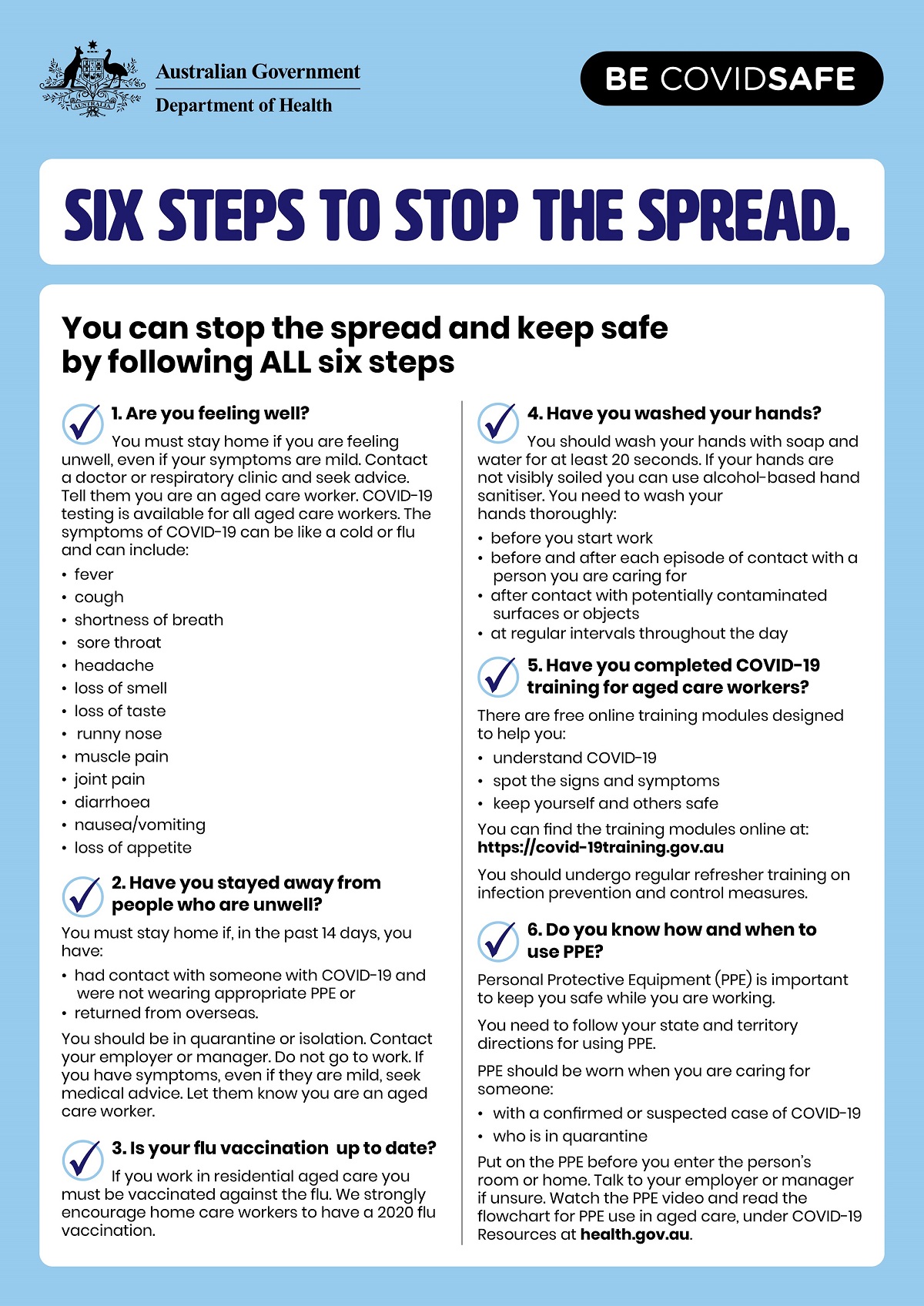- Home
- Residential Aged Care
- Home Care
- Retirement Living
- Support Services
- Aged Care Jobs
Need help finding an aged care provider? My Care Path offers a free support service. Call 1300 197 230
Need help finding an aged care provider? My Care Path offers a free support service. Call 1300 197 230
on Wednesday, August 5, 2020
1. Are you feeling well?
You must stay home if you are feeling unwell, even if your symptoms are mild. Contact a doctor or respiratory clinic and seek advice. Tell them you are an aged care worker. COVID-19 testing is available for all aged care workers. The symptoms of COVID-19 can be like a cold or flu and can include:
2. Have you stayed away from people who are unwell?
You must stay home if, in the past 14 days, you have:
You should be in quarantine or isolation. Contact your employer or manager. Do not go to work. If you have symptoms, even if they are mild, seek medical advice. Let them know you are an aged care worker.
3. Is your flu vaccination up to date?
If you work in residential aged care you must be vaccinated against the flu. We strongly encourage home care workers to have a 2020 flu vaccination.
4. Have you washed your hands?
You should wash your hands with soap and water for at least 20 seconds. If your hands are not visibly soiled you can use alcohol-based hand sanitiser.
You need to wash your hands thoroughly:
5. Have you completed COVID-19 training for aged care workers?
There are free online training modules designed to help you:
You can find the training modules online here.
You should undergo regular refresher training on infection prevention and control measures.
6. Do you know how and when to use PPE?
Personal Protective Equipment (PPE) is important to keep you safe while you are working. You need to follow your state and territory directions for using PPE.
PPE should be worn when you are caring for someone:
Talk to your employer or manager if unsure. Watch the PPE video and read the flowchart for PPE use in aged care, under COVID-19 Resources at www.health.gov.au.

Join 10,000+ subscribers for the latest news
